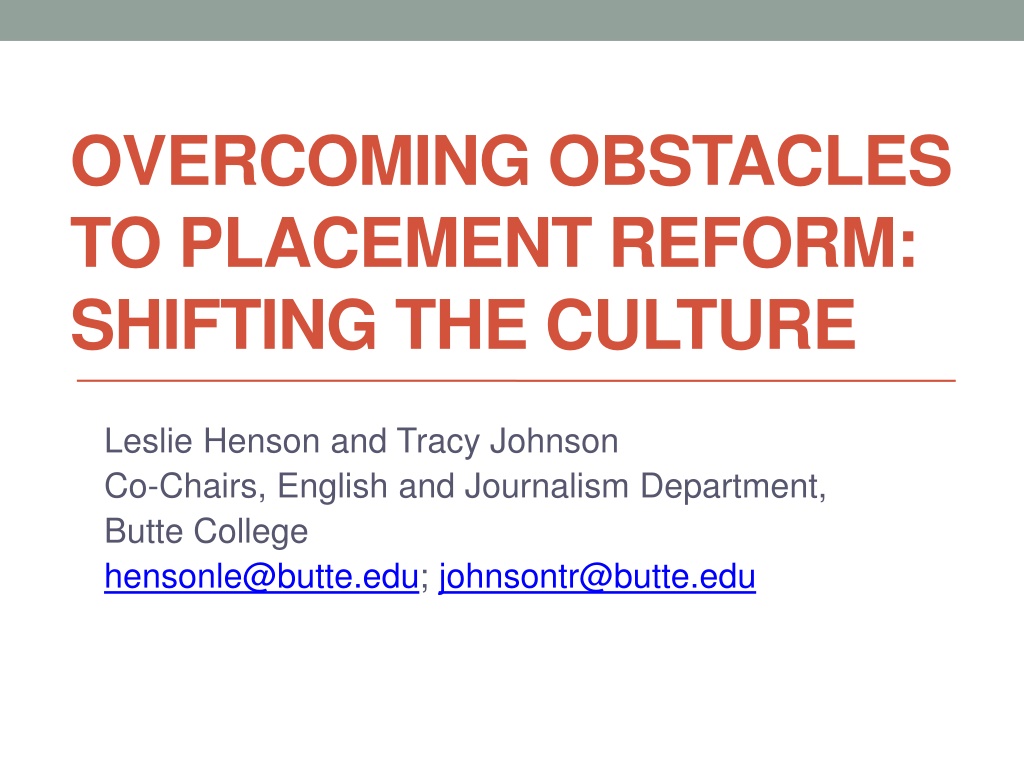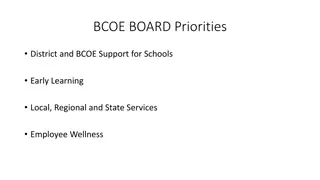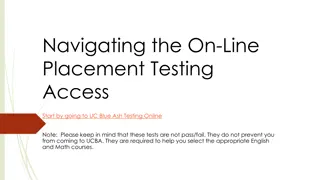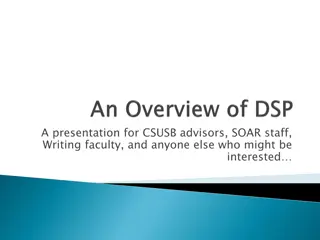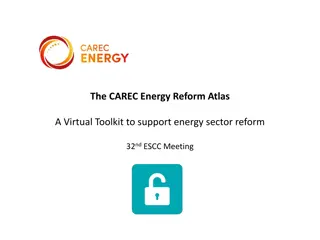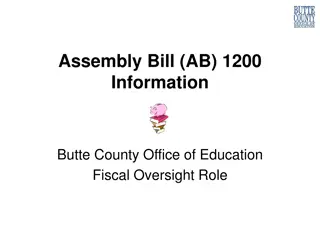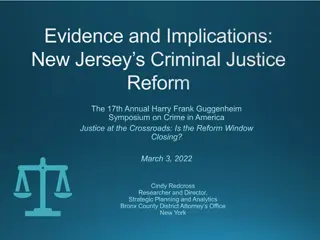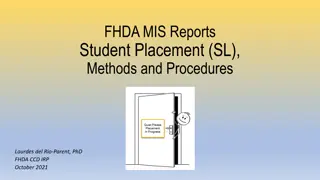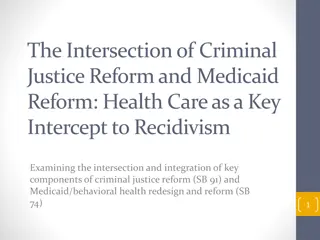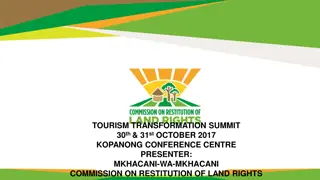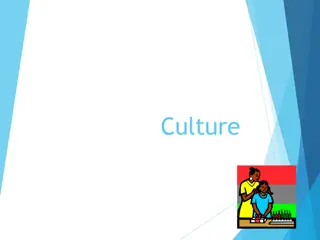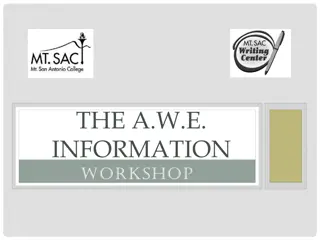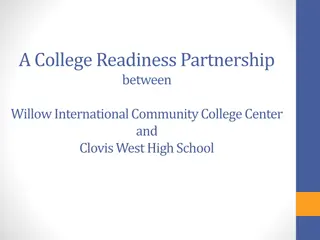Transforming English Placement Reform: A Cultural Shift at Butte College
Discover the journey of successful English placement reform at Butte College led by Leslie Henson and Tracy Johnson. Explore the positive impacts of shifting the culture around placement tests and practices. Learn tips on overcoming obstacles and promoting student success through innovative strategies.
Download Presentation

Please find below an Image/Link to download the presentation.
The content on the website is provided AS IS for your information and personal use only. It may not be sold, licensed, or shared on other websites without obtaining consent from the author. Download presentation by click this link. If you encounter any issues during the download, it is possible that the publisher has removed the file from their server.
E N D
Presentation Transcript
OVERCOMING OBSTACLES TO PLACEMENT REFORM: SHIFTING THE CULTURE Leslie Henson and Tracy Johnson Co-Chairs, English and Journalism Department, Butte College hensonle@butte.edu; johnsontr@butte.edu
Topics The happy accident that led to placement reform in English at Butte College Tips for shifting the culture around placement Interactive questions for how to shift the culture in your own contexts
The happy accident behind change In 2011, Butte switched from one placement test to another. Old test/cut scores: 23% of incoming students college ready in English New test/cut scores: 48% of incoming students college ready in English
What people thought might happen Massive lowering of success rates in college English More students not completing the English sequence Struggling students being left behind
Completion of College English in One Year College-Wide first-time freshman cohort Tripled for African American students (8% Doubled for Hispanic students (13% Doubled for Asian students (17% 1.6 times higher for White students (23% 23%) 27%) 35%) 37%) Old policy: Whites completion nearly 3 times higher than African Americans New policy: There s still a gap, but whites completion now just 1.6 times higher than African Americans
TIPS How to shift the culture around placement
#1, Make Under-placement Visible Under-placement: Placing students into developmental courses when they could succeed in higher-level courses Share placement studies by CCRC showing existence of massive amounts of under-placement (see Resource slide at end) Discuss ways to start seeing the students in developmental courses who could succeed in transfer- level work, e.g., 10/30 of my developmentally placed students passed our department special permission writing diagnostic, moved up into college English. Point out how many current placement validation measures can t detect under-placement (if they only ask about performance in current level)
#2, Encourage statistical thinking Discuss tendency to focus on struggling students. Your success rates have actually increased. Name representative versus non-representative student examples in discussions Stress that the pipeline effect/exponential attrition is a law of nature. Emphasize the equity and completion increases shown by published data (see Resource slide); these apply to the entire overall student population
#3, Question the assumptions behind test- based placement Discuss whether a one-shot standardized test is really the best way to determine students abilities. Examine information about how multiple measures like high school grades are better predictors of student success and result in increased college-level placements (see Resource slide). Question assumption that students abilities are set, not impacted by our instruction and their efforts. Share information about stereotype threat and how it results in poor test performance (see Resource slide).
#4, Build ongoing support Invite objectors to conferences Shift the focus to pedagogy: reading strategies, helping students overcome affective and non-cognitive barriers to learning, low-stakes work early in term, metacognition Develop administrative allies, BSI/Equity Coordinators as allies, diversity and social justice folks as allies Bring in different information, evidence, and research, a bit at a time Use different venues for presenting your information not just department meetings, but flex activities on campus, equity or student success group meetings
INTERACTIVE QUESTIONS First, time to think and jot down notes, and then group work with folks at your table. Then report outs.
Interactive questions 1) How many students place below transfer-level in English at your institution? What about in math? Can you articulate why these percentages matter? 2) What has the conversation about placement been at your college? What is the culture around placement? Is there a sense of its significance? Is there a feeling that it s working or not working? How do people feel about the current placement methods and results?
Questions continued 3) What data do you need to help move the conversation forward at your college? What do you imagine would be your first, second, and third steps in moving toward a less test-focused culture that understands the value of broader access to transfer- level courses? 4) Anticipate what some of the strongest resistors to placement reform might say. Flesh out their argument fully. Then say how you would respond to it.
Resources Josh Aaronson s video, Rising to the Challenge of Stereotype Threat California Acceleration Project Facebook page Community College Research Center practitioner packet on improving accuracy of remedial course placement: http://ccrc.tc.columbia.edu/publications/improving-accuracy- remedial-placement.html Multiple Measures Assessment Project: http://rpgroup.org/projects/multiple-measures-assessment- project California Acceleration Project s publication Moving the Needle on Student Completion in the Dec. 14 Board Focus Henson and Hern, Let Them In: Increasing Access, Completion, and Equity in College English, in the Nov./Dec. 14 issue of Perspectives and on the California Acceleration Project website
